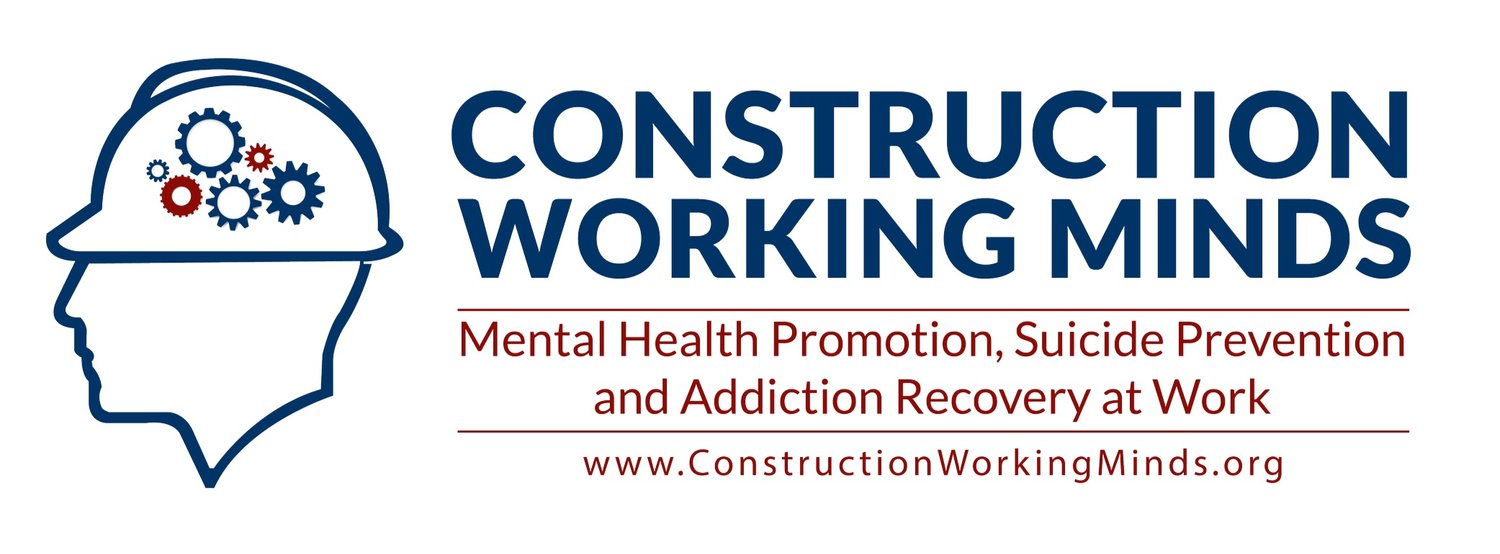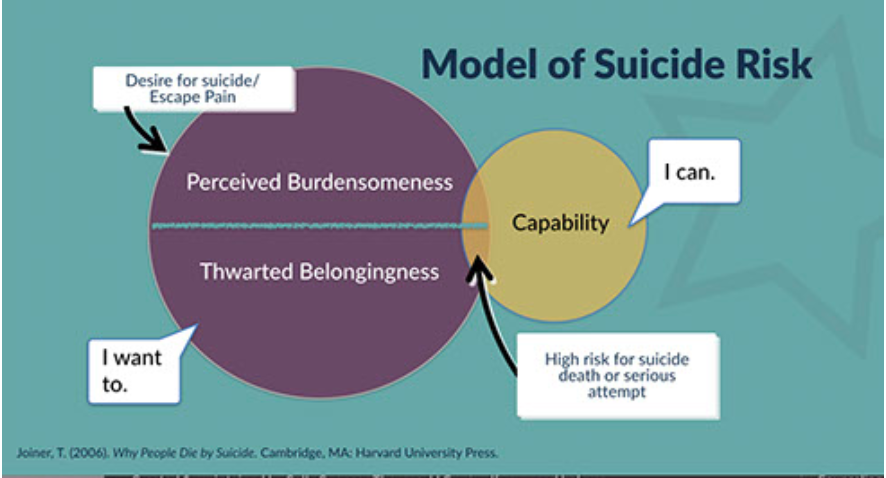Thomas Joiner's Model of Suicide Risk
In his book Why People Die by Suicide, Thomas Joiner (2006) outlines several theories of suicide that have emerged over the past two centuries. His Interpersonal-Psychological Theory of Suicide has great utility in helping the workplaces assess risk. In this theory, Joiner says that those who kill themselves not only have a desire to die, they have learned to overcome the instinct for self-preservation (see Figure 1).
In other words, wanting death, according to Joiner, is composed of two psychological experiences: a perception of being a burden to others (perceived burdensomeness) and social disconnection to something larger than oneself (thwarted belongingness). In the first condition, the word perceived is emphasized, because it doesn’t matter what the rest of the world sees; what matters is how the person views him or herself. Very often the thought is this: “I am worth more dead to the people that love me than I am alive.” The person who is suicidal has often lost their sense of purpose. The second component, thwarted belongingness has to do with a sense of social connection. As human beings we are hardwired to be in relationship with others, and when those ties are cut or dissolve, we suffer in isolation.
By themselves, however, neither of these states is enough to move a person to act on the desire for death, but together with a capability (or fearlessness) they result in a high risk state for suicide. Since birth humans have a strong instinct to preserve their own life. Joiner argues that a series of painful and provocative experiences over the course of a lifetime can disinhibit a person from the fear of pain and death associated with suicide. These experiences may be related to trauma and abuse, but they may also involve high risk behaviors, injuries from contact sports, and a knowledge of and comfort with deadly means of suicide (e.g., firearms or lethal drugs). This factor also explains why a previous suicide attempt is the strongest predictor of a future attempt. Still, on the capability side of the model, having painful and provocative experiences or an attraction to death defying behavior does not in and of itself predict suicide. The risk is elevated where the two factors overlap – when a desire for suicide is met with the ability to carry it out.

